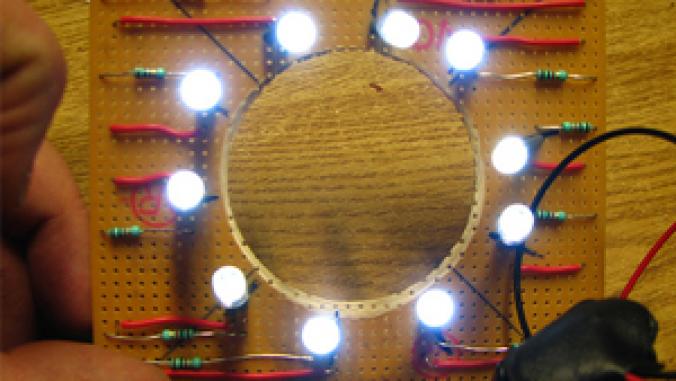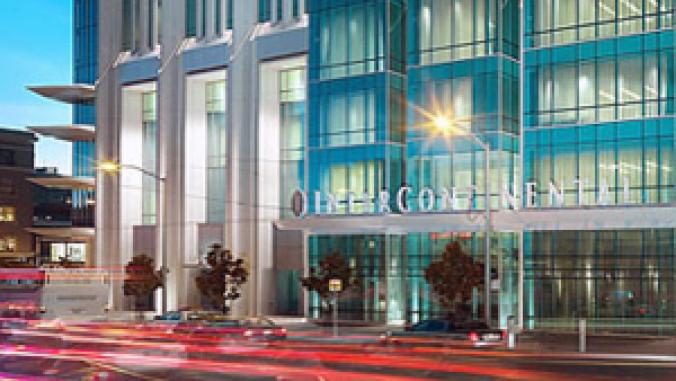S.F.'s Newest Green Building to Raise the Bar on Sustainability
The new Public Utilities Commission headquarters has been designed by KMD Architects to exceed LEED's Platinum standard, go completely off the energy grid, use one-fifth the water of normal buildings and minimize its carbon footprint.
The recently announced design for the new 12-story headquarters for the San Francisco Public Utilities Commission will become a national leader in demonstrating energy efficiency, water recycling and reduced carbon footprint among major office buildings nationally, according to P.U.C. officials.
"What better organization than a major municipal power and water agency to create one of the most advanced buildings in green design in the U.S.?" asked David Hobstetter, principal of KMD Architects, who designed the building.
"Our intent from the beginning was to create the most energy-efficient office building developed in an urban setting in the United States to date," said P.U.C. deputy general manager Anthony Irons. The $178 million, 254,000-square foot headquarters will include features uncommon in buildings today, but "would be commonplace in years to come," he said. Officials say construction will be paid by selling surplus real estate holdings and by issuing bonds against future rent savings, not by funds from rate-paying customers.
Dozens of wind turbines on the roof, solar panels embedded in outer walls, and a natural-cooling "thermal chimney" are among the features enabling the structure to supply 40 percent of its own energy needs, said Hobstetter. On windy, sunlit days, it will go off the power grid completely.
"The SFPUC headquarters is the type of well-proportioned, elegant project that reveals the next wave of thinking by designers and planners in which the building is seen as a component of its natural setting. The possibilities for innovation are limitless; just think of a city that regenerates rather than depletes its natural resources," said Lisa Sullivan, the director of publications for Places: Forum of Design for the Public Realm, a journal sponsored by a consortium of design schools.
Planned to break ground near San Francisco's City Hall in 2008, the P.U.C. headquarters also employs advanced water-saving and water-recycling. Faucet sensors, waterless urinals, and on-demand water heaters will cut use to 5 gallons per occupant per day, compared to average office-building use of 25 gallons a day. A grey-water wastewater recycling system enables reuse of water from faucets and sinks in the building's toilets and the cooling system.
While water and power efficiencies were the P.U.C's primary goals, Hobstetter said the new headquarters will also employ cutting-edge design concepts in enhancing human performance.
"Dozens of research studies have confirmed the benefits of natural daylight and views of green space in improving a person's productivity, reducing absenteeism and improving health and well-being," said Hobstetter. "By utilizing sun-filtering shades, new window-glazing materials and other techniques, we were able to bring sunlight well inside the structure's interior work spaces."
"Energy efficiency is one thing, it can be accomplished with smart technology; it is easily measured," said Ryan Stevens, a design principal at KMD. "We want to go one step further and provide a work space that will contribute to preserving the environment, foster interaction, creativity and productivity and also inspire the community."
The building is designed to exceed LEED's Platinum standard, and will exceed California's recently instituted Title 24 requirements for energy efficiency in new office buildings by 60 percent, Stevens added.
"What better organization than a major municipal power and water agency to create one of the most advanced buildings in green design in the U.S.?" asked David Hobstetter, principal of KMD Architects, who designed the building.
"Our intent from the beginning was to create the most energy-efficient office building developed in an urban setting in the United States to date," said P.U.C. deputy general manager Anthony Irons. The $178 million, 254,000-square foot headquarters will include features uncommon in buildings today, but "would be commonplace in years to come," he said. Officials say construction will be paid by selling surplus real estate holdings and by issuing bonds against future rent savings, not by funds from rate-paying customers.
Dozens of wind turbines on the roof, solar panels embedded in outer walls, and a natural-cooling "thermal chimney" are among the features enabling the structure to supply 40 percent of its own energy needs, said Hobstetter. On windy, sunlit days, it will go off the power grid completely.
"The SFPUC headquarters is the type of well-proportioned, elegant project that reveals the next wave of thinking by designers and planners in which the building is seen as a component of its natural setting. The possibilities for innovation are limitless; just think of a city that regenerates rather than depletes its natural resources," said Lisa Sullivan, the director of publications for Places: Forum of Design for the Public Realm, a journal sponsored by a consortium of design schools.
Planned to break ground near San Francisco's City Hall in 2008, the P.U.C. headquarters also employs advanced water-saving and water-recycling. Faucet sensors, waterless urinals, and on-demand water heaters will cut use to 5 gallons per occupant per day, compared to average office-building use of 25 gallons a day. A grey-water wastewater recycling system enables reuse of water from faucets and sinks in the building's toilets and the cooling system.
While water and power efficiencies were the P.U.C's primary goals, Hobstetter said the new headquarters will also employ cutting-edge design concepts in enhancing human performance.
"Dozens of research studies have confirmed the benefits of natural daylight and views of green space in improving a person's productivity, reducing absenteeism and improving health and well-being," said Hobstetter. "By utilizing sun-filtering shades, new window-glazing materials and other techniques, we were able to bring sunlight well inside the structure's interior work spaces."
"Energy efficiency is one thing, it can be accomplished with smart technology; it is easily measured," said Ryan Stevens, a design principal at KMD. "We want to go one step further and provide a work space that will contribute to preserving the environment, foster interaction, creativity and productivity and also inspire the community."
The building is designed to exceed LEED's Platinum standard, and will exceed California's recently instituted Title 24 requirements for energy efficiency in new office buildings by 60 percent, Stevens added.




